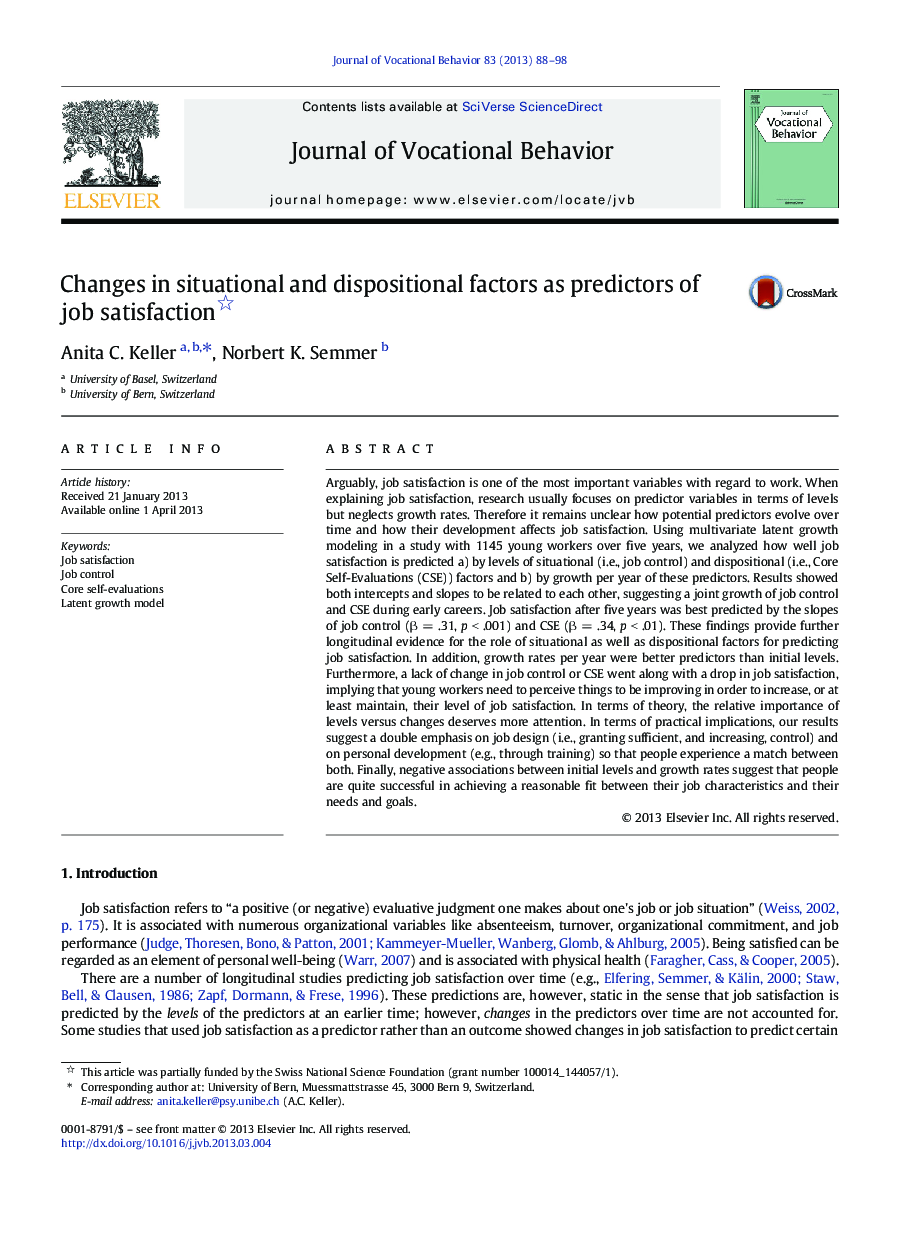| کد مقاله | کد نشریه | سال انتشار | مقاله انگلیسی | نسخه تمام متن |
|---|---|---|---|---|
| 886927 | 913152 | 2013 | 11 صفحه PDF | دانلود رایگان |

• Overall, job satisfaction declined over five years.
• Both job control and Core Self-Evaluations (CSE) increased over five years, with changes in job control being steeper.
• Yearly gains in job control and CSE were correlated during early careers, implying co-development.
• Changes in job control and CSE predicted job satisfaction in the last year better than levels of these predictors.
• Job satisfaction dropped unless there were positive changes in job control and/or CSE
Arguably, job satisfaction is one of the most important variables with regard to work. When explaining job satisfaction, research usually focuses on predictor variables in terms of levels but neglects growth rates. Therefore it remains unclear how potential predictors evolve over time and how their development affects job satisfaction. Using multivariate latent growth modeling in a study with 1145 young workers over five years, we analyzed how well job satisfaction is predicted a) by levels of situational (i.e., job control) and dispositional (i.e., Core Self-Evaluations (CSE)) factors and b) by growth per year of these predictors. Results showed both intercepts and slopes to be related to each other, suggesting a joint growth of job control and CSE during early careers. Job satisfaction after five years was best predicted by the slopes of job control (β = .31, p < .001) and CSE (β = .34, p < .01). These findings provide further longitudinal evidence for the role of situational as well as dispositional factors for predicting job satisfaction. In addition, growth rates per year were better predictors than initial levels. Furthermore, a lack of change in job control or CSE went along with a drop in job satisfaction, implying that young workers need to perceive things to be improving in order to increase, or at least maintain, their level of job satisfaction. In terms of theory, the relative importance of levels versus changes deserves more attention. In terms of practical implications, our results suggest a double emphasis on job design (i.e., granting sufficient, and increasing, control) and on personal development (e.g., through training) so that people experience a match between both. Finally, negative associations between initial levels and growth rates suggest that people are quite successful in achieving a reasonable fit between their job characteristics and their needs and goals.
Journal: Journal of Vocational Behavior - Volume 83, Issue 1, August 2013, Pages 88–98